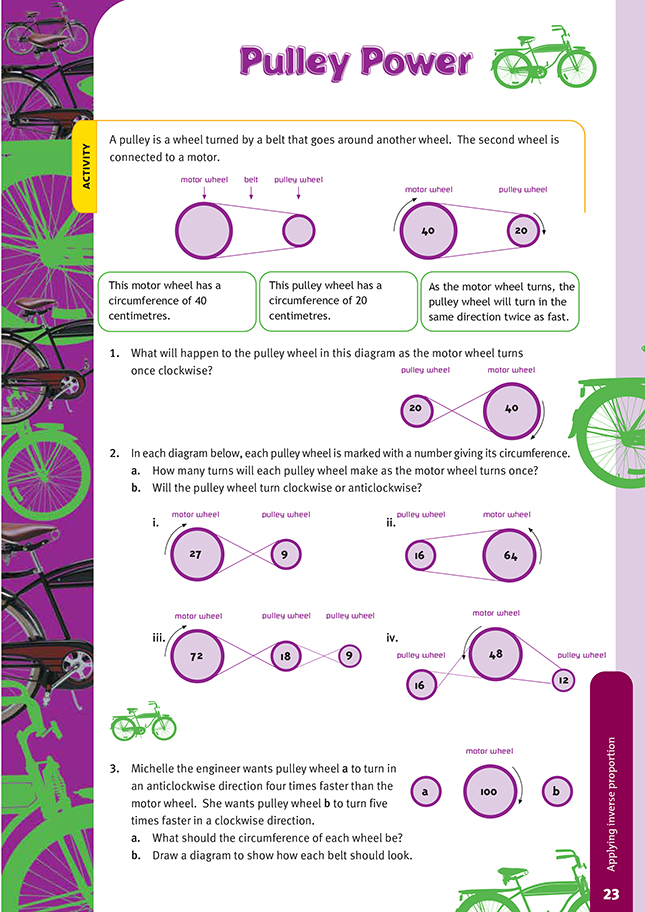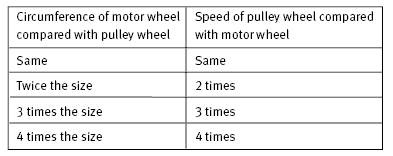This is a level 4 number activity from the Figure It Out series. It relates to Stage 7 of the Number Framework.
A PDF of the student activity is included.
Click on the image to enlarge it. Click again to close. Download PDF (272 KB)
apply linear proportions
FIO, Level 4+, Number, Book Six, Pulley Power, page 23
The pedals, chain, and sprockets on a bike are a form of pulley system. The big sprocket with pedals is equivalent to the motor, the chain is the same as the belt, and the small sprockets on the back wheel are equivalent to the pulley. (See Gearing Up, pages 22–23, in Sport, Figure It Out, levels 3–4.) It may therefore be useful to first link this activity to the action of pedalling a bike. The students probably haven’t previously considered the physics of pedalling, so this activity could provide them with some interesting insights.
This activity requires not only some maths calculations but also some spatial visualisation. To determine which way the pulley will turn in each problem, the students will have to mentally trace the path of the belt from the motor wheel to the pulley wheel. If this proves to be a challenge for some students, they could
physically trace the path with their finger. After they have tried one or two examples, the students may come to see that:
i. when there is a direct pathway (as with a bike chain, and as in question 2b ii), the pulley turns in the same direction as the motor wheel;
ii. when there is one loop in the belt (as in question 2b i), the pulley turns in the opposite direction to the motor wheel.
The next task is to determine the speed of the pulley wheel in each case. Here, you can help the students to see that the speed is in inverse proportion to the size of the motor and pulley wheels. Thus, when the motor wheel is, say, 50 centimetres in diameter and the pulley wheel is 25 centimetres wide (that is, the motor wheel is twice the diameter of the pulley), the speed of the pulley will be twice that of the motor wheel. To illustrate further, if the motor wheel was twice as large again (100 centimetres in diameter) and the pulley wheel remained at 25 centimetres, the motor wheel would now be four times the diameter of the pulley wheel and so the speed of the pulley wheel would be four times as great as the speed of the motor wheel. Perhaps the students could summarise this relationship as follows:
Answers to Activity
1. The pulley wheel will turn twice in the opposite (anticlockwise) direction.
2. a.–b. i. Three turns anticlockwise
ii. Four turns anticlockwise
iii. Eight turns clockwise
iv. The 16 pulley wheel will make three turns clockwise. The 12 pulley wheel will make four turns anticlockwise.
3. a. Wheel a should have a circumference of 25.
Wheel b should have a circumference of 20.
b. Drawings will vary. They should be similar to this one:


